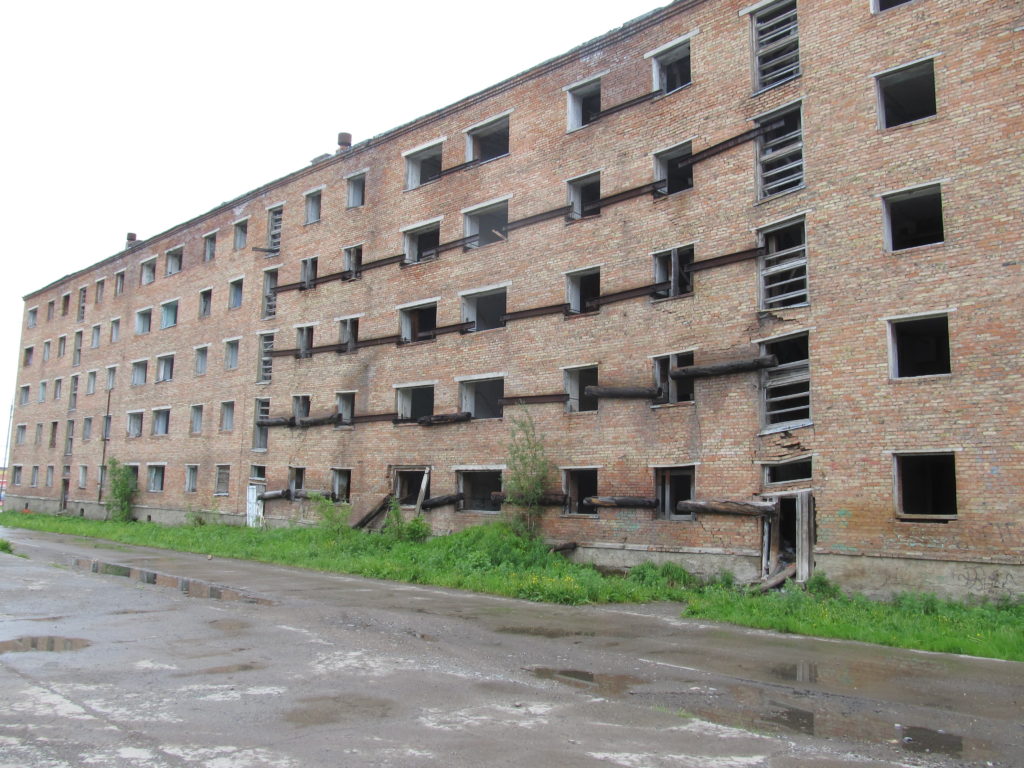Permafrost thaw in Russia alone could cost more than $80 billion in damaged infrastructure, report says
Warming will damage about 20 percent of infrastructure built on permafrost in Russia by 2050, with homes hit especially hard, according to the new research.

Permafrost is thawing all over the world, and it likely contains more greenhouses gases than previously estimated. It also threatens to destabilize infrastructure — homes, buildings, roads, pipelines, and more — for the millions who live in the Arctic.
And now researchers have a better picture about the extent and cost of at least some of that damage.
In their first published findings, accepted for publication in Environmental Research Letters, a team of researchers found that 20 percent of existing structures and 19 percent of other forms of infrastructure built on permafrost in Russia will be affected by climate change by 2050.
[Deep permafrost around the world’s cold regions is warming, a decade-long study shows]
And it will cost an estimated $16.7 billion to reconstruct the damaged buildings and $67.7 billion to replace other infrastructure, like roads and pipelines.
Homes will be particularly hard-hit; more than half of residential buildings built on permafrost in Russia will be affected by significant permafrost degradation by the middle of this century.
These estimates don’t include repairs to fix minor damage — only irreparable changes that would require rebuilding from the ground up. And they only count existing infrastructure, not any that’s being planned or for which there is an anticipated need.
While the high Arctic warming fastest, permafrost in the southern Arctic, which supports more infrastructure, will be more threatened, lead author Dmitry Streletskiy argued, because permafrost loses its ability to support structures the warmer it gets.
“The ability of permafrost to support infrastructure depends on the temperature. Colder permafrost is super-strong, it’s solid,” he said. “The closer it gets to the melting point, it becomes more mellow.”
So it’s bad when permafrost thaws, he said, but even permafrost that is still technically frozen can become dangerously weak as it grows warmer.
“You will have ground that’s still in a frozen state, but the ability of this frozen ground to support structures is already less,” he said.
[How permafrost insurance could revolutionize Arctic development]
The cost of rebuilding damaged infrastructure in Russia is not as high as Streletskiy had anticipated. But the costs are relative, he said, pointing out that building Olympic infrastructure in Sochi, for example, cost about $55 billion.
“In Russia, the cost might not seem very substantial, overall,” he said. Yet the changes are an undeniably important issue in Arctic cities.
“For some regions, it’s pretty substantial,” he said. The northern regions affected by permafrost thaw are also resource bases that are strategic for the Russian economy, Streletskiy pointed out.
“Those places contribute a lot,” he said.
The major conclusion of the findings, Streletskiy said, is that decisionmakers need to take action now to mitigate and adapt to thawing permafrost before these changes become even more expensive.
“If you don’t monitor those changes, if you don’t measure the temperature of the permafrost, then you don’t know it’s warming,” he explained. “If you don’t know it’s changing, you can’t fix it.”
“it’s happening. If you’re not going to think about it, it’s going to cost you.”